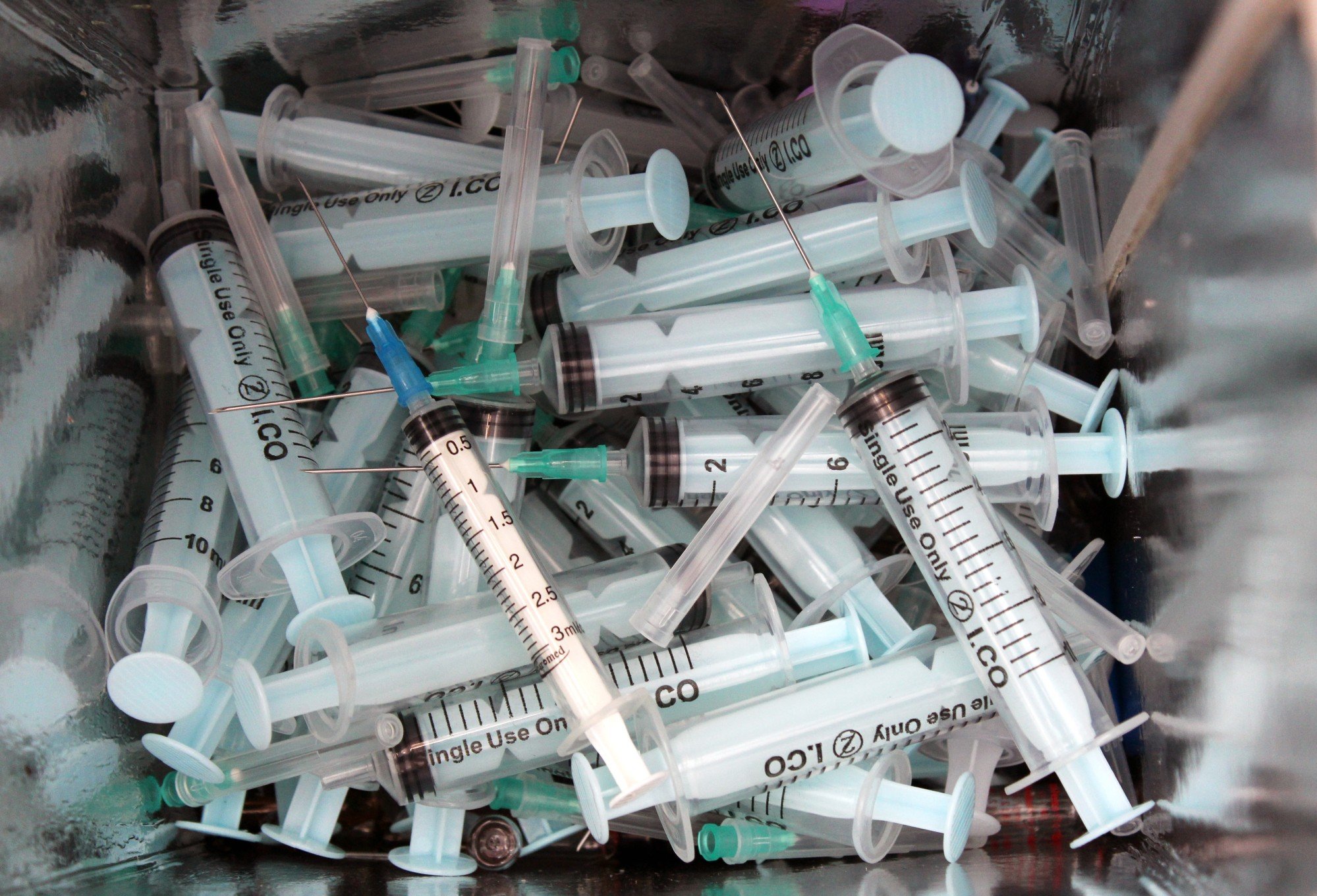The Post covers how such incidents happen, the disease itself, and how people can avoid contracting it.
1. What is Hepatitis C?
Hepatitis C is a viral infection that affects the liver, causing acute and chronic illnesses that can be life-threatening.
Infection is spread through contact with infected blood, including sharing needles and syringes, or through unsafe medical procedures such as transfusions with untested blood products.
Symptoms include fever, fatigue, loss of appetite, nausea, vomiting, abdominal pain, dark urine, and yellowing of the skin and eyes.
Acute hepatitis C infection is usually asymptomatic and in most cases does not lead to life-threatening illness.
About 30% of infected people will naturally clear the virus within six months of infection without treatment, but the remaining 70% will develop chronic hepatitis that can lead to cirrhosis and liver cancer.
According to the World Health Organization (WHO), an estimated 50 million people worldwide live with chronic hepatitis, with around 1 million new cases each year.
According to the 2020-22 Population Health Survey, around 17,000 people in Hong Kong were infected with Hepatitis C.
2. What happened at Princess Margaret Hospital?
According to the hospital, the 24-year-old man was admitted to hospital on March 21 for treatment of a head injury and was subsequently transferred to the intensive care unit of the neurosurgery department on April 11.
He tested negative for Hepatitis C in mid-April, but showed signs of elevated liver enzymes and tested positive on June 15.
Contact tracing conducted by the hospital identified 16 other patients who stayed in the same private room over the same period, including a 24-year-old man and a patient with underlying health conditions who died.
 Princess Margaret Hospital said a 24-year-old man was initially admitted for treatment for a head injury on March 21. Photo: Felix Wong
Princess Margaret Hospital said a 24-year-old man was initially admitted for treatment for a head injury on March 21. Photo: Felix Wong
3. How was the disease transmitted?
The hospital said the 24-year-old patient and the 52-year-old Hepatitis C carrier required frequent use of invasive catheters, blood tests and intravenous injections, and both also received wound care during their stay.
All of these procedures can increase the risk of infection, the company said.
Dr Theresa Wang Kin-fung, an expert in clinical microbiology and infectious diseases, said a common route of infection for Hepatitis C, a blood-borne disease, in hospitals is through needlestick injuries, where a used, contaminated needle accidentally penetrates a patient's skin.
Wang added that the infection rate through this route is about 0.3%.
She said all hospitals have mechanisms for reporting Hepatitis C cases, which are responded to by infectious disease teams, while patients with needlestick injuries undergo blood tests to screen for the disease and prevent further infection.
But she said hospitals could do more, such as improving staff training on infection prevention.
Wang also called for stepped-up testing for the disease, especially for patients who require advanced care and are unable to tell staff they are infected.
Loy Mak Lun Yi, a clinical associate professor at the University of Hong Kong's medical school, said the hospital has a series of standard precautions in place to prevent the spread of infection, such as properly disposing of used needles and requiring staff to always wear new gloves before treating each patient.
He said that because the city's infection rate is low, about 0.3 percent, not everyone is screened regularly, but people at high risk of hepatitis C infection, such as those who share needles and men who have sex with men, are also regularly tested.
“If standard precautions are followed thoroughly, there should be no transmission of Hepatitis C in the hospital,” she said, adding that she did not see any major loopholes in current procedures.
 Safely disposing of needles is a key step in preventing the spread of Hepatitis C in hospitals. Photo: Shutterstock
Safely disposing of needles is a key step in preventing the spread of Hepatitis C in hospitals. Photo: Shutterstock
4. How can I prevent myself from getting Hepatitis C?
There is no vaccine for Hepatitis C, but it can be treated with antiviral drugs.
Early detection and treatment can help prevent serious liver damage and improve your long-term health.
According to the WHO, the best way to prevent the disease is to avoid contact with the virus.
The report says that special attention should be paid in health-care settings to people at high risk of hepatitis C infection, such as people who inject drugs, men who have sex with men, and people with HIV.
Effective measures include proper use of medical injections, safe handling and disposal of needles and medical waste, and training of health-care workers.
Donated blood must be tested for hepatitis C and other viruses, and people are encouraged to practice safe sex using condoms.
The Viral Hepatitis Control Department, under Hong Kong's Department of Health, has also urged people to avoid sharing personal care items such as razors and toothbrushes, as well as equipment such as needles and syringes that may be contaminated with blood.
Wang, the infectious disease specialist, said a key step in curbing hepatitis C infections in hospitals is to reduce patients' exposure to contaminated blood, which can be found in carriers' vomit or in used medical gauze and needles.
She urged patients to avoid contaminated materials and equipment, and to tell medical staff immediately if they experience needlestick injuries or cuts.
 A cluster of methicillin-resistant Staphylococcus aureus (MRSA) cases was discovered in the neonatal intensive care unit at Guanghua Hospital earlier this year. Photo: Jerry Tse
A cluster of methicillin-resistant Staphylococcus aureus (MRSA) cases was discovered in the neonatal intensive care unit at Guanghua Hospital earlier this year. Photo: Jerry Tse
5. What about similar cases in the past?
From superbugs to respiratory infections, diseases can spread easily in a hospital environment, especially a crowded one, even if infection control measures are taken.
Earlier this year, an outbreak of methicillin-resistant Staphylococcus aureus (MRSA) was discovered in the neonatal intensive care unit at Guanghua Hospital.
In January, two infants, a 35-day-old girl and boy, were found to be carriers of the superbug and later, two other infants in the same ward were also found to be infected with the virus.
Three more infants were subsequently found to have MRSA infection.
A cluster of parainfluenza type 3 infections was also reported in January in a ward for women with learning disabilities at Kwai Chung Hospital, initially affecting four patients.
It was later discovered that another patient in the same ward was also infected.



